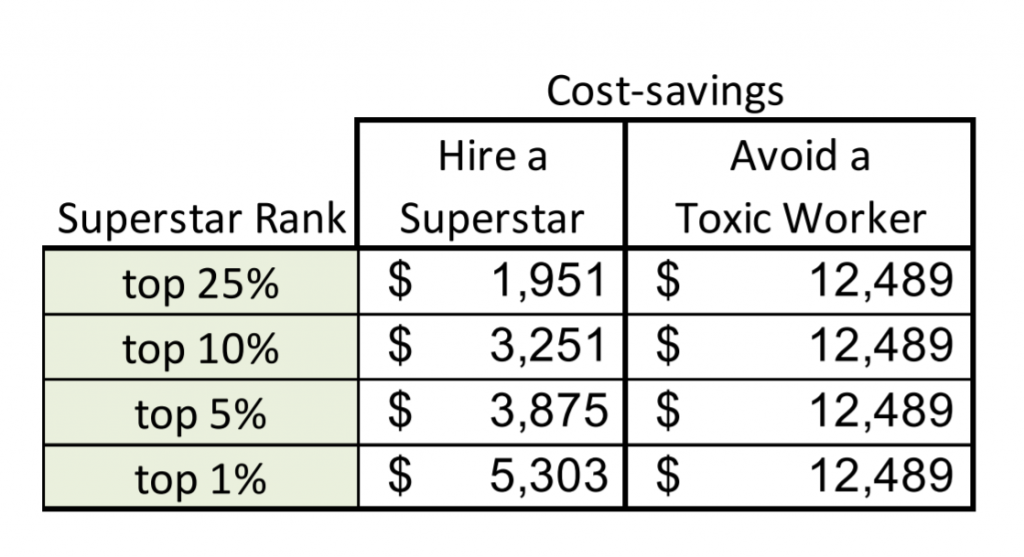
Leaders in companies like to hire the best people they can find in the market. In our success-oriented world nobody wants to work with mediocre employee. All-star teams only. They want to work with the best of the best so they come up with catchy phrases like:
“Looking for black belt ninja. Come join us and work only with the best!”
You can find lots of books about management or recruitment which even help you find and hire such people. But is it really only about looking for top performers? Shouldn’t we put some focus on toxic people who have negative impact on a whole team in order to eliminate this negative energy?
Team is like a cake
I like the comparison Aytekin Tank used in his article [1] saying that a great team is like a cake. You can put a lot of effort towards choosing only the highest quality ingredients. You can find the most delicious recipe and you can even use high-end utensils and still end up with an awful cake. Why?
“Because there can be just one rotten egg that will ruin the flavor.”
While enormous effort is placed on discovering the best employees, less attention is paid to answering even more important question. How are toxic people, the ones who may be harmful to a company, supposed to be managed?
Finding superstars vs avoiding toxic coworkers
What’s more beneficial to an organization – hiring a superstar or avoiding a toxic person? It’s hard to answer that question for all possible cases but Michael Housman and Dylan Minor [2] assessed such a trade-off in their own setting. They compared the cost savings of hiring and keeping a superstar with avoiding a toxic coworker in an entire team.

You shouldn’t hold on too tightly to the presented numbers because in your case they may be quite different. But you should treat those numbers as an indicator of differences between hiring and avoiding. For me that was the trigger which forced me to think about how much harm a toxic person can do to a company.
The cost of hiring a superstar
Housman and Minor assumed that a superstar would add more value. Such a person could generate savings from increased output and thanks to that a company wouldn’t have to hire additional workers. But there are two sides to every story. Typically superstars cost more than an average employee, meaning that with improved performance comes a higher salary. A company needs to take that into account.
Note that Michael Housman and Dylan Minor didn’t count in productivity spillovers of a superstar. Can spillovers be negative? Yes, sometimes they can be, for instance when an employee gives more than it’s required or the outcome of the work is unrelated to company goals. When such issues occur the work is done, the time is spent but the company doesn’t generate income.
What about toxic employee?
They generate losses at many levels. $12,489 is the total estimated cost of replacing additional workers who left a company due to a toxic colleague. This number could even be higher because there are also secondary costs of turnover which were not included in the amount. You should also factor in additional problems such as lower team morale and the risk of establishing poor company reputation on the job market (due to firing a toxic person), learning curve of a new employee and as a result lower productivity at the beginning of cooperation.
Avoiding toxic employee wins!
Even if you find and hire a superstar who performs in the top 1% it would still be better to replace one toxic coworker with an average employee. Of course I’m not suggesting you should fire toxic people immediately. Sometimes toxic coworkers can be fast and produce high-quality work. That’s why if it’s possible you can motivate them and convert them into average employees.
Keep in mind that the difference in cost savings presented by Michael Housman and Dylan Minor may not be so drastic in your settings but still it’s worth analyzing its advantages.
Conclusion
Bear in mind how difficult and expensive it is to find, hire and retain a top 1% superstar. People working in HR can probably corroborate that. Additional problem noted by Boris Groysberg [3] is that performance is not portable. A person who is an outstanding performer in one company may not necessarily be the best fit for your organization.
Instead of focusing only on top performers, we should also watch out for toxic people. They can do a lot of harm.
References
[1] Aytekin Tank. (2008). The truth about toxic workers in the workplace. Medium.com.
[2] Michael Housman, Dylan Minor. (2015). Toxic Workers. Harvard Business School.
[3] Viswesvaran, Chockalingam (Vish). (2011). Boris Groysberg. (2010). Chasing Stars: The Myth of Talent and the Portability of Performance. Princeton, NJ: Princeton University Press. 464 pages. Human Resource Management. 50. 10.1002/hrm.20427.